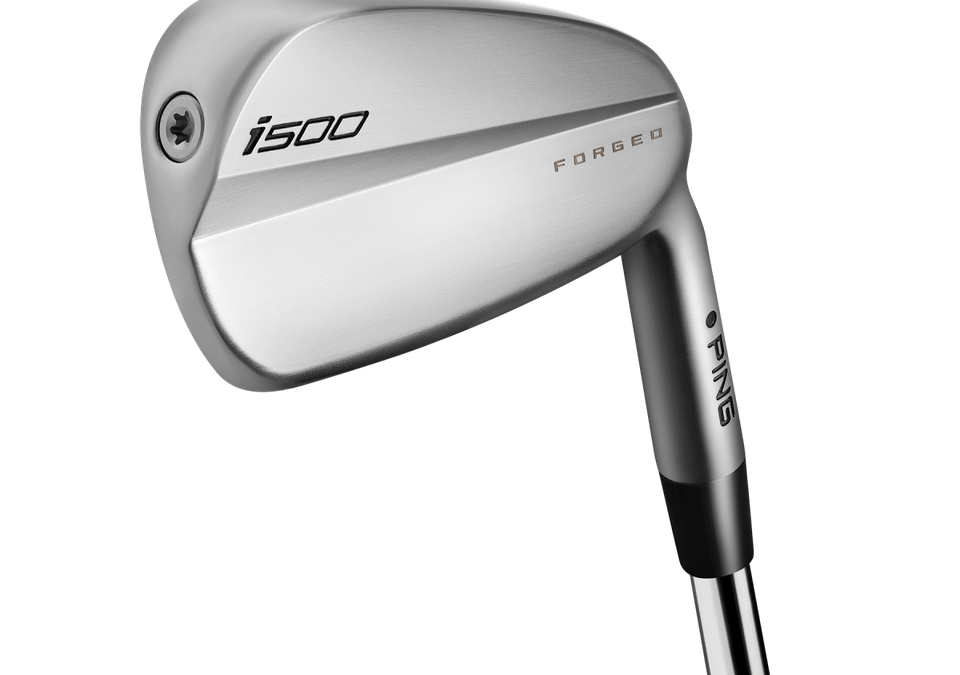By Scott Kramer
With the British Open underway, it was inevitable that some golf equipment companies would introduce new clubs. Seems to happen every year this week. PING happened to catch my eye on Monday, introducing two new irons and a wedge. And I cannot wait to try them out, having always carried a torch for the brand’s irons. Here’s a company that doesn’t stick to any schedule for product intros. Officials launch new products only when they feel they have something special. And they usually do.
This year, the sleek blade-like i500 iron aims to deliver distance with a high ball flight. It sort of has the shaping of TaylorMade’s P790 iron, right down to a plug in the toe. In this case, the port is used to fine-tune swing weight. PING officials liken the looks to their popular G700 iron, saying it has a smaller, more compact, muscle-back appearance. A forged, C300 maraging-steel face is milled and combined with a stainless-steel body. That helps it perform more like a metal wood in generating significant ball-speed increases and lower-spinning, higher-flying shots that can stop once they hit the green. Part of its distance formula is the internal cavity that maxes out face flexing at impact. Golfers “can expect to hit one less club into the green when properly fit for the new iron,” promises John K. Solheim, president of PING. The company doesn’t make outlandish claims, so you can probably take this one to the bank.
With the compact i210 iron, the company seems more focused on a club that feels soft and offers distance control. In its first week out, Tour player Brandon Stone used the 3-, 4- and 5-iron to win the Aberdeen Standard Investments Scottish Open. It combines a stainless-steel head with a large and soft elastomer insert. It also features the brand’s custom tuning port, which increases perimeter weighting and provides swingweight fine tuning. That allows for more face contact at impact, letting the elastomer soften the feel. The clubface and grooves are milled — like the cavity — and the grooves are more tightly spaced in the set’s two wedges to help prevent fliers that soar over the green. Don’t underestimate the hydropearl chrome 2.0 finish that repels water, helping you keep control in the morning dew.

Then there’s the Glide Forged wedge. It’s forged from soft carbon steel, and is sized and shaped for golfers wanting a sleek, high-spinning blade-style wedge with a soft feel. Its sole has a rounded lead edge for versatility, and its grooves have a sharp edge radius for better backspin. A tungsten toe weight boosts forgiveness. But the actual wedge is not the only story here. PING debuted a dedicated website where golfers can create unique customized versions of the wedge. This “is an exciting new direction for us,” says Solheim. “It comes with the ability for golfers to create a truly unique wedge by adding one of four custom graphics, three stamping options and 12 paint fills.” You can also choose from various shaft and grip options.
Scott Kramer is veteran, Southern California-based writer primarily versed in golf and personal technology. Studying Computer Sciences in college, and then working as a programmer/software engineer for about a decade, triggered my passion for today’s high-end, high-tech gadgets. I can’t help myself whenever I see any kind of cool new personal technology. I feel compelled to further check it out and see what it’s all about. And even if I have no use for it personally, I’m always thinking who it might best suit. There are exciting new innovations emerging daily that are shaping the future and simplifying life. And I hope to be your eyes to that world, through the words of this column.

